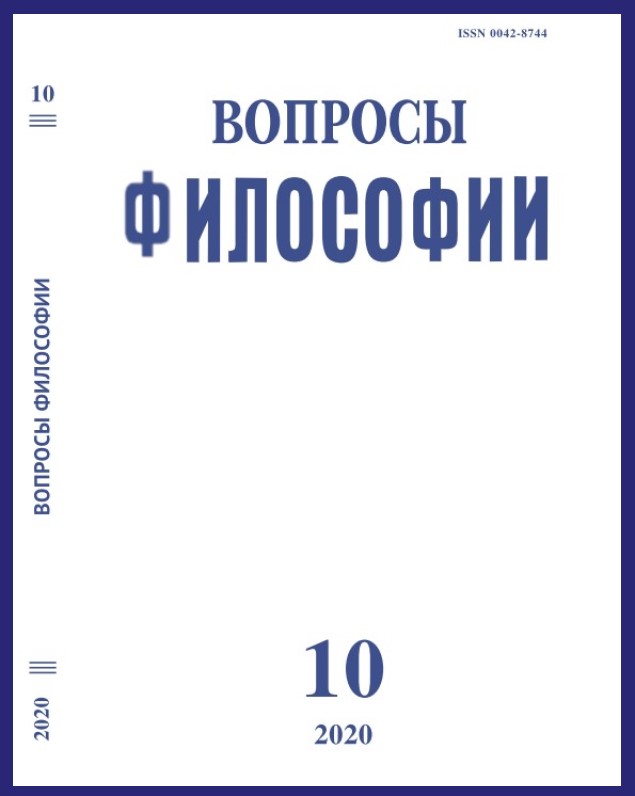The Uniqueness of Civilizations of Cultures – the Heritage and Resource Every Man and All Humanity
DOI:
https://doi.org/10.21146/0042-8744-2020-10-5-16Keywords:
anthroposociocultural approach, town, identity, core of culture. myth, axial age, religion, community, civilization, manAbstract
The author takes part in research work of the Institute of Philosophy RAS on the theme “The Russian project of civilizational development”. The purpose of research is to develop a project of the world order that would preserve the whole
diversity of cultures embodied in civilizations. The article presents the results of the author’s search for solutions to this task not through refinement of the general definition of civilization but by revealing its uniqueness as the property of humanity. The research was conducted from the positions of the anthroposociocultural approach developed by the author. The K. Jasper’s conception of the axial age is examined in detail. The author develops the idea of civilization as a self-organizing set of relationships of identification (identity) of many people with historically uniqueness culture, which is centered on man. It supports the use and development of its biosociocultural qualities, which are embodied in the skills and results of human life, allowed them to stand out from nature, to survive and develop steadily. The quality of the culture of each civilization can be considered as the characteristics of its uniqueness. As anthropocultural communities, civilizations are characterized by a kind of way of life, long reproduced from generation to generation, allow people to successfully meet new challenges

